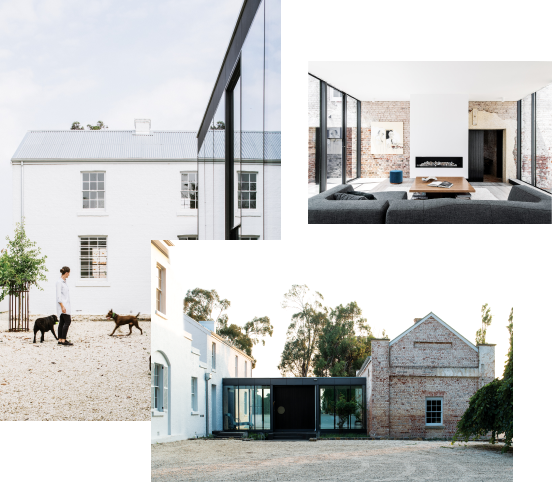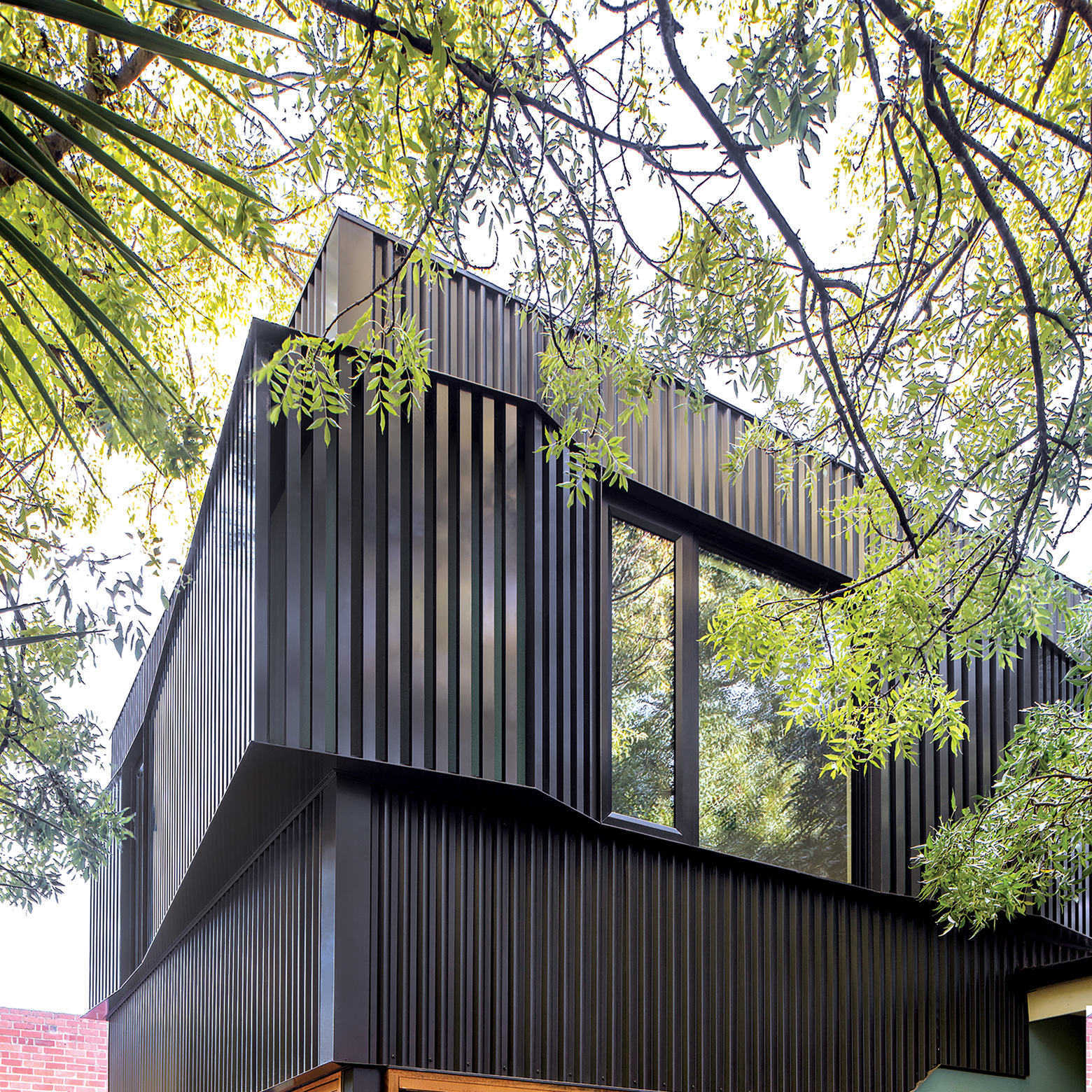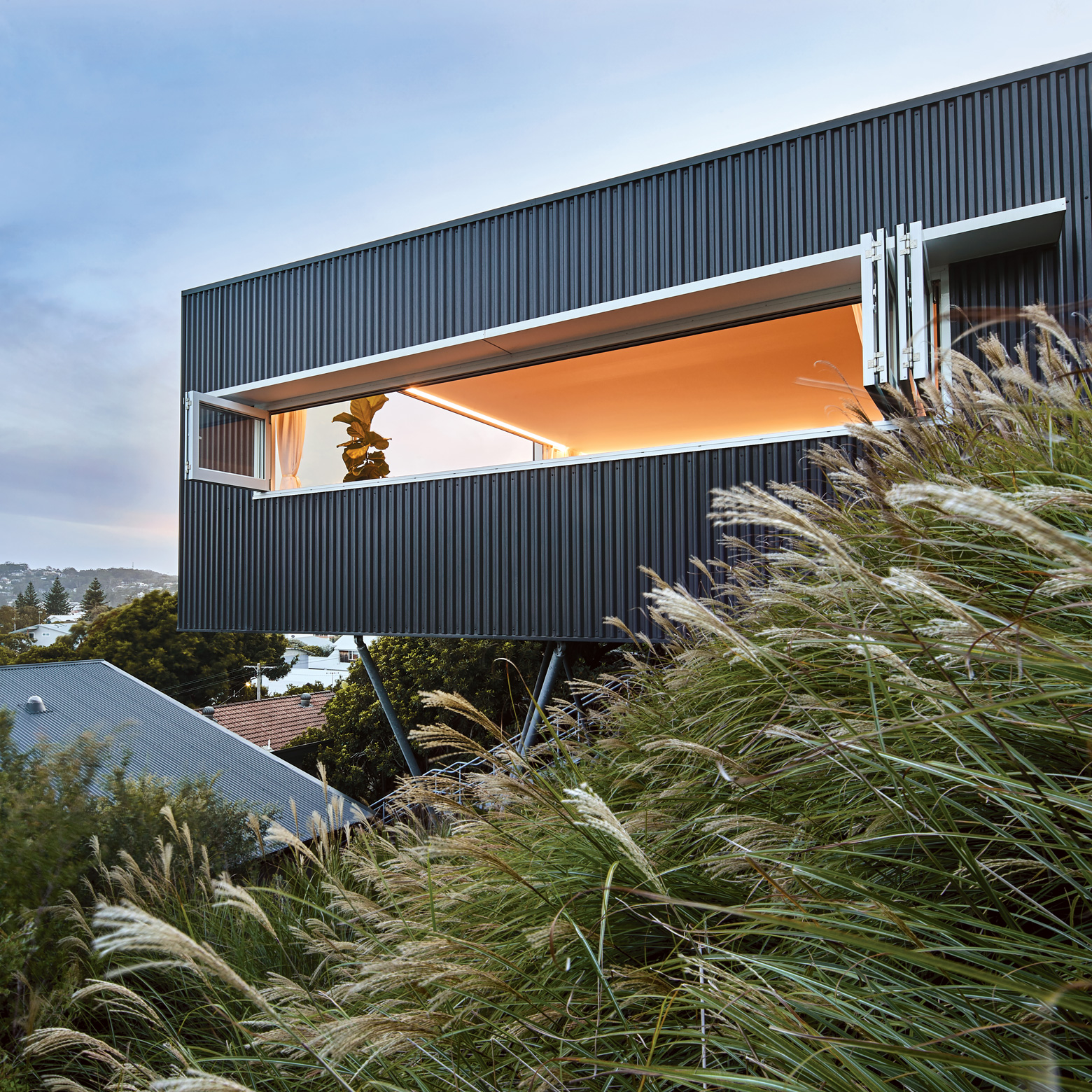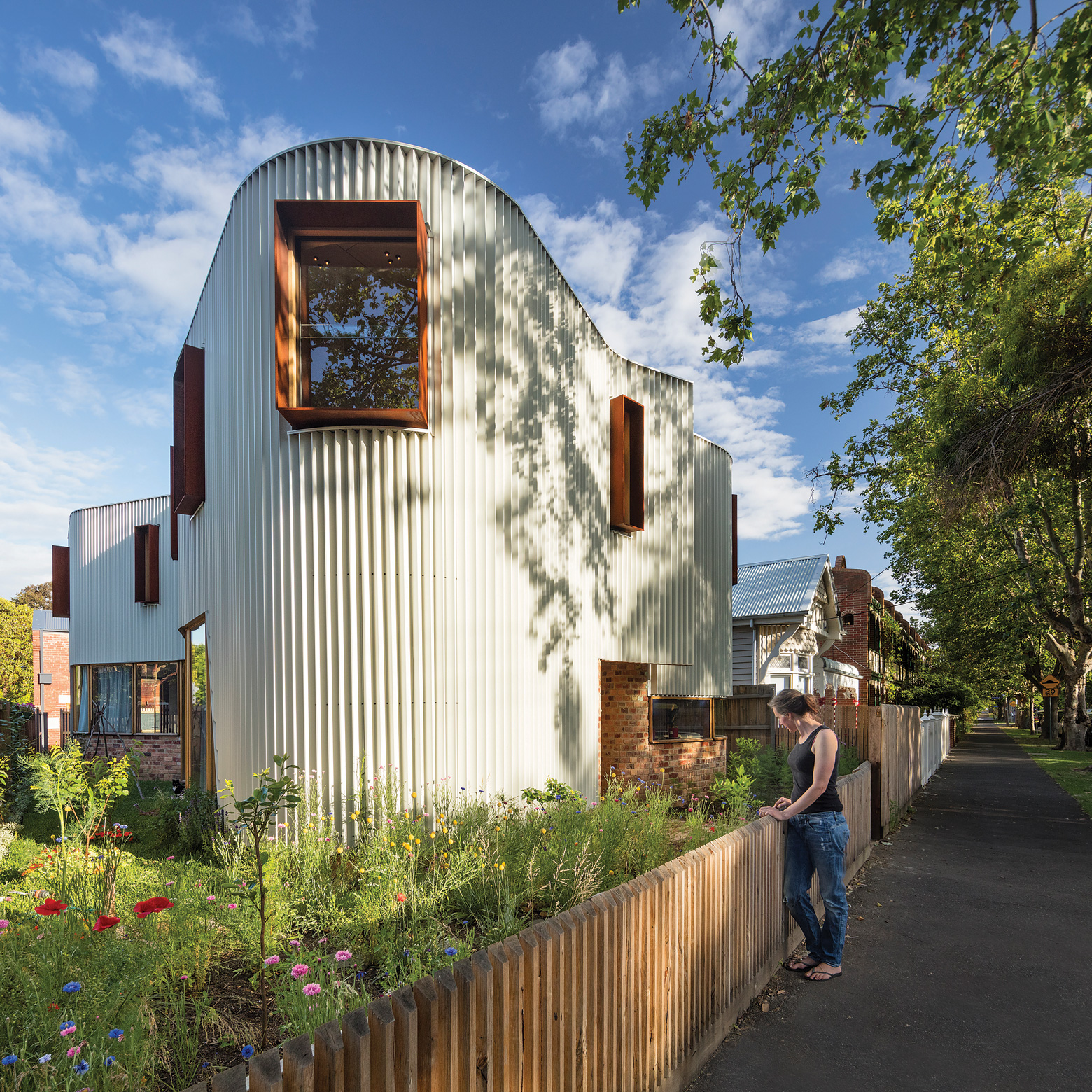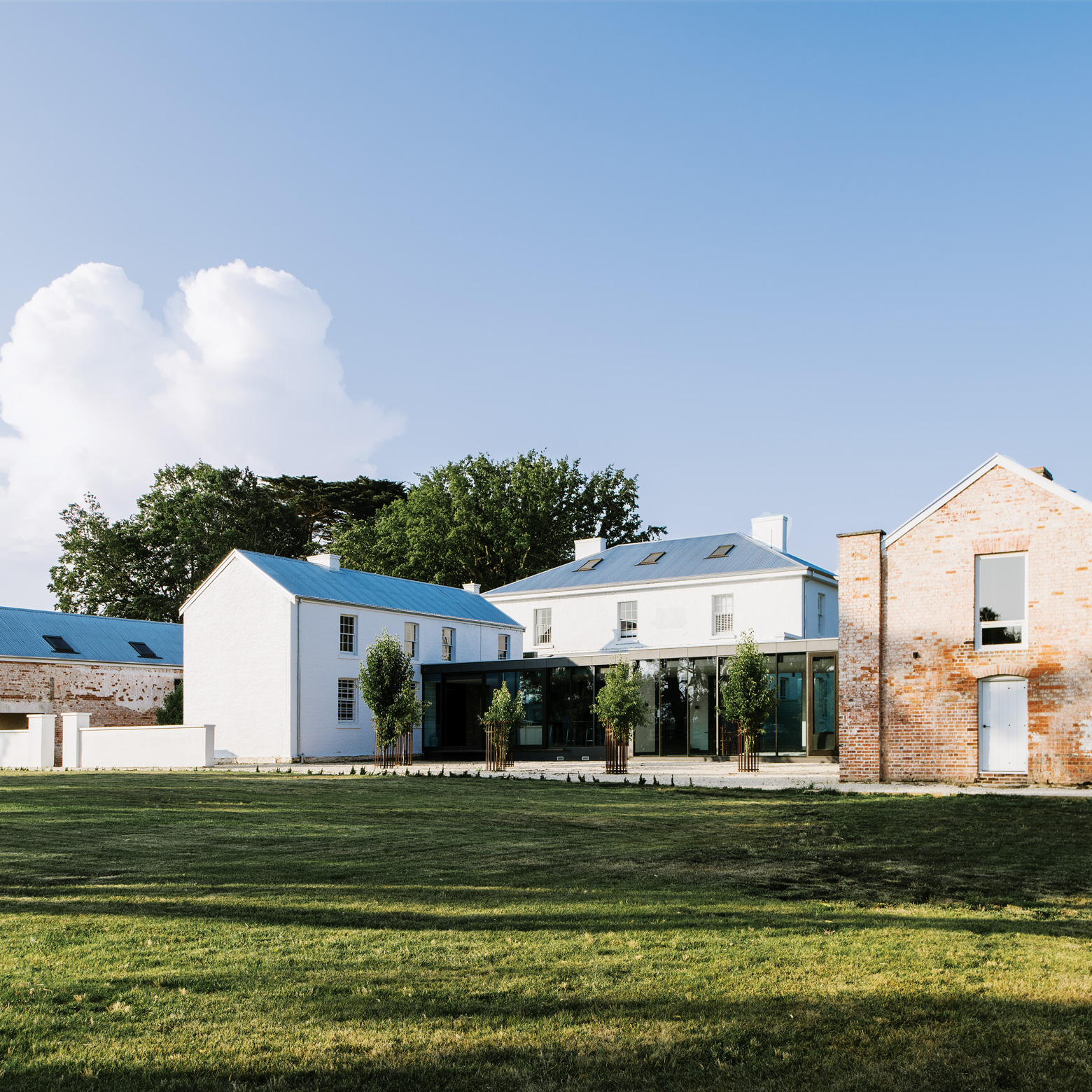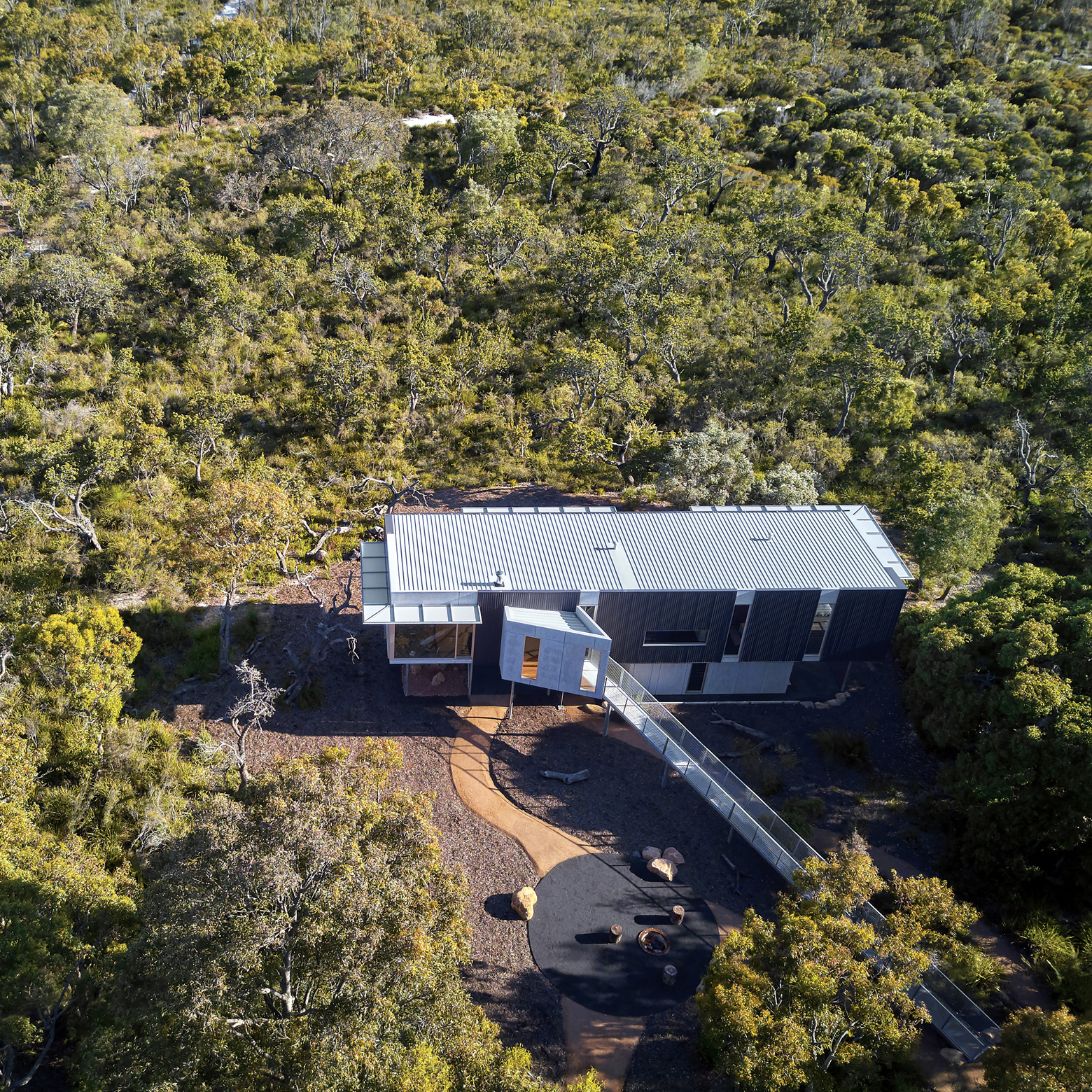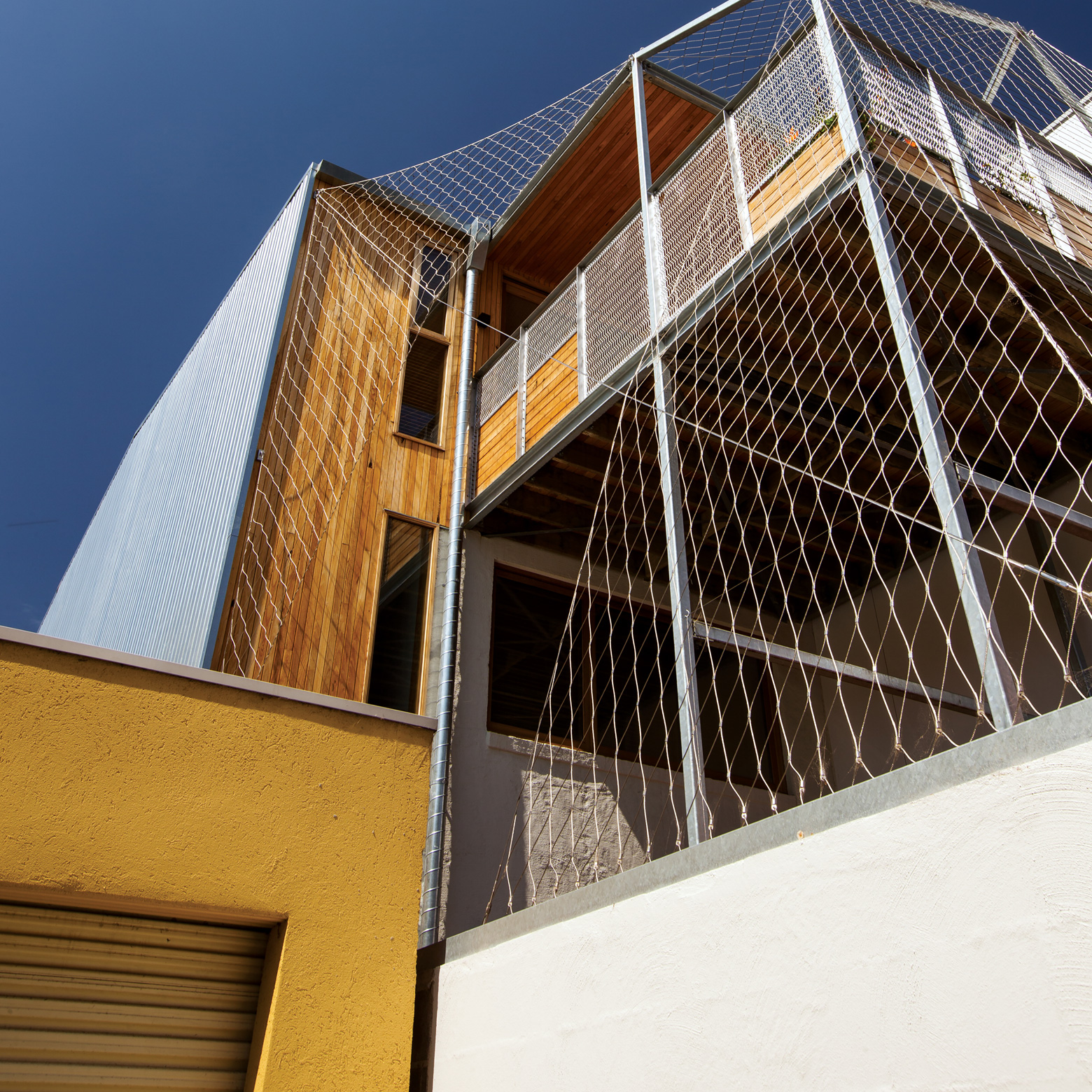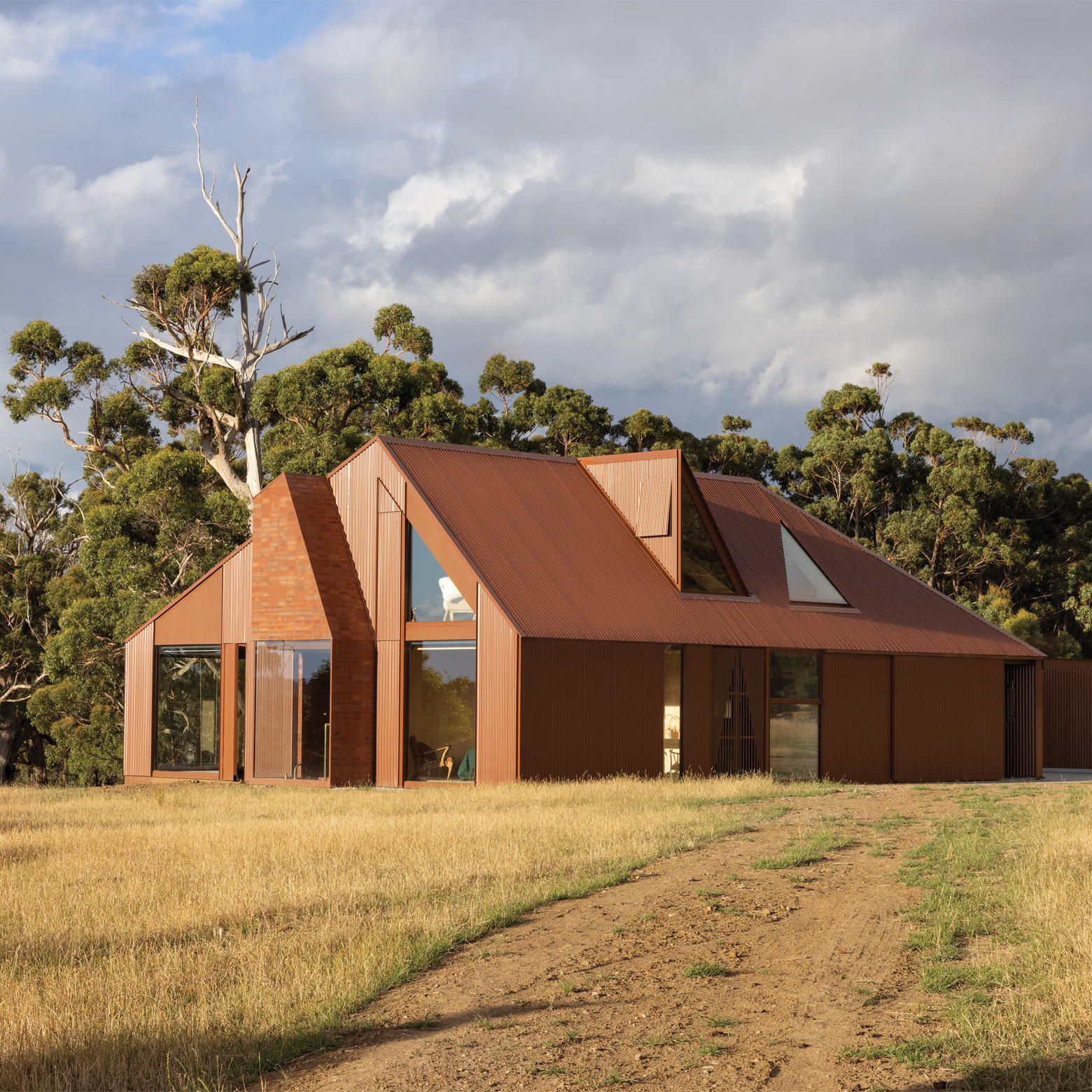
Buena Vista House
Responding to the material history of the site and locale, Shaun Lockyer Architects has re-envisaged domesticity for a young family in suburban Brisbane. The result is a determined celebration of functionality that embraces moments of poetry along the way.
Words: Margie Fraser.
Photography: Paul Bradshaw
Project Summary
With COLORBOND® steel wrapping down from the roof and spilling over its walls, this home for a young family by Shaun Lockyer Architects re-envisages domesticity by responding to the site and the locale’s material history.
Locale Hero
Buena Vista House, as the name suggests, takes advantage of a buena view from its high perch, capturing a slice of central Brisbane’s skyline.
Shaun Lockyer of Shaun Lockyer Architects was careful to honour the material context of the area in this new build on a sought-after north-facing corner block. With an imperative to establish good economy, and owners who were keen to pursue an industrial aesthetic of sorts, Lockyer has developed an unassuming materiality that draws on its context in a clever and pleasing way. “We have reversed the vernacular of brick and tin project homes, using steel and brick in their place,” says Lockyer. “The local terracotta roofs are referenced in our use of brick, but the house design is really all a by-product of the steel roof.”

The roof, constructed of COLORBOND® steel in Stramit Longspan® profile in the colour Monument®, satisfies in part the clients’ central drive in the brief for functionality and low maintenance. Inside, expressed gang-nail trusses support the roof, while outside its angular topography threads together the home’s subtly articulated three distinct wings.
Architectural cladding made from COLORBOND® steel in LYSAGHT LONGLINE 305® profile in the colour Monument® wraps down and over the walls, as if spilling over from the roof above. Seen at its most expressive on the prow-like north-eastern elevation, this distinctive carapace that meets the brickwork is nevertheless nicely recessive with its dark aubergine hue.
The act of wrapping is emphasised by the device of the steel elements being inserted into and over the brick walls, so that the metal appears as cut-out, applied as sections to the masonry core. The precision of the “cut-outs” is celebrated in the machined exactitude of the expressed, custom-made L-bracket window awnings, the balustrades and the architectural steel cladding, as well as the expressed custom-made rainwater heads. Flashings are also made from COLORBOND® steel in the colour Monument® while eave gutters and downpipes are made from ZINCALUME® steel. A nice rhythm is established where the metal elements peel away from and frame the brick walls and fenestrations in a jigsaw of varied shapes.

While a counter to the praising of the bespoke, the hand-built, and the crafted that occupies much architectural dialogue today, this metalwork is in itself a form of specialist construction and design that offers beauty in its simple formality.
Balustrades that double as wall sections are profiled to match the vertical lines and proportions of the LYSAGHT LONGLINE 305® profile cladding. This rhythm is nicely orchestrated by Lockyer through the contrast of the architectural steel cladding’s vertical lines, interrupted by the brick’s subtle raked joints and horizontality.
Custom-made steel soffits and window reveals have a robust and timeless elegance, and introduce exterior elements to the interiors.
Unevenly dispersed banks of louvres along the eastern bedroom wing also add to the tartan-like mix of horizontal and vertical patterning that subtly emerges from the conjunctions of dark brick and steel. The same LYSAGHT LONGLINE 305® profile architectural steel cladding - again made from COLORBOND® steel in the colour Monument® - has been used to build the house’s custom-made garage door, which is a dominant feature of the entry and eastern elevation. In all, it’s a refined essay in steelwork, well aided by the skill of the builder, Crowley MDR (now Michael De Re).
“The main manoeuvre was to raise the living spaces to the first floor while retaining a sense of anchoring”
The original home on the site, a 1950s brick and tile slab-on-ground bungalow, sat squatly in position, squaring up with the street frontage and straddling a diagonal angle across the rear of the wedge-shaped block. While admired by the owners, it had dark interiors and suffered from rising damp. From its low setting, the outlook to the city to the northwest was obscured. Lockyer skewed the new plan to address the northern corner rather than the street frontage, and wrapped the house into a shallow U-shape to form a northern courtyard.
The main manoeuvre, though, was to raise the living spaces to the first floor, while retaining a sense of anchoring. Large expanses of glazing along the edges of the living spaces create indoor verandahs at the edge of each of these north-facing rooms. There is a wonderful sense of light and space as one progresses through these rooms.
The smaller western wing houses a small observation tower-cum-reading room that grabs the prime city view, and again enjoys perimeter glazing where a deck might have been. As Lockyer notes, “It’s lovely to be enclosed in a viewing room, and having no decks allows more winter sun penetration.”

The floating piano nobile allows for a series of undercroft rooms and an open, shaded space at ground level. A capacious garage that now houses the owners’ significant stable of collectable cars can in future become a second living room for children. The open area below the eastern wing of bedrooms is a barbecue and outdoor dining space. Adjacent to the grassed courtyard, these spaces frame and engage with a future-planned swimming pool. The entry is nestled into the elbow of two wings, forming a small, tiled plaza with easy orientation towards inside, outside and upwards to the light-filled hub of the home. Brick walls extend to the earth as thick plinths along the elevations, creating a strong grounding to the site.
Even with ample garage space the footprint of the three-bedroom home is by today’s standards small, and Lockyer is keen to promote the idea of the smaller home that devotes more space to the garden. He is also part of the anti-folly brigade, and Buena Vista is a fine example of functionality. In this sense, it echoes the no-nonsense practicality of the original home that the owners had first admired and contributes to a new domesticity that is averse to overbearing architectural statements.
“It is small. It has a sturdy steel roof and with brick veneer has a project home construction,” says Lockyer, somewhat modestly.
The act of wrapping is emphasised by the device of the steel elements being inserted into and over the brick walls, so that they appear as cut- out, applied as sections to the masonry core.
While resolving the simple plans, some pleasing and surprising angles evolved – as well as some moments of delight in a few quirky shapes. And what pleases Lockyer most is the meeting of the budget and timeframe. “This is the most economical house we have ever built, costing 25 per cent less than our practice’s per-square-metre average and the house was also built on time without any cost variation. The savings were a function of using standard economic materials such as steel that were readily available, easily installed and familiar to our subcontractors, however the savings also stemmed from our overall approach to the design.”
Steel is undoubtedly the hero, and the visible element that threads together the brick and timber, both inside and out.


Panel Says
This brick and steel-clad house challenges many of the rules about what a suburban dwelling might look like and how it might function. Atop a brick base, a steel carapace acts as an abstraction with COLORBOND® steel architectural cladding cascading down from the roof to form the upper-level walls. It’s this unexpected composition and the accentuation of its unique form that makes the building appear to skip and spin as it is read from various vantages.
On an almost triangular shaped block, the design balances privacy and prospect by elevating the main living spaces, offering a rich diversity of spatial environments such as loft-like social areas and cocoon-like retreats, and leaving the ground plane free as an informal external setting. It confidently challenges the local suburban vernacular, to great effect.
Project information
Architect
Shaun Lockyer Architects
Project
Buena Vista House, Queensland
Location
Coorparoo, Queensland View on Google Maps
Copyright © 2016 BlueScope Steel Limited ABN 16 000 011 058. All rights reserved.
No part of this publication may be copied, reproduced or distributed without consent. BlueScope Steel Limited, to the extent permissible at law, is not liable to any person for loss or damage arising from reliance upon information contained in this publication. The articles featured in this edition of STEEL PROFILE® are sourced, written, fact-checked and curated by the authors with editorial contribution from BlueScope Steel Limited. Any statements or opinions attributed to a person are the views of that person alone and do not necessarily reflect those of BlueScope Steel. The decision to use any particular product or material in the projects featured in this publication was made by the team involved in each project and not BlueScope Steel Limited. While care has been taken to verify the accuracy of details in this publication, BlueScope Steel Limited assumes no responsibility or liability for any errors or omissions in the content of this publication. All information is provided with no guarantee of completeness or accuracy.
Images shown throughout have been reproduced to represent actual product colours as accurately as possible. However, we recommend checking your chosen colour against an actual sample of the product before purchasing, as varying screens and devices may affect colour tones and finishes.
Every project is different and not all products are suitable for all applications, projects and environments. You should confirm the suitability of particular products for your project by contacting the supplier directly and by obtaining information and advice specific to your circumstances.
BlueScope generally recommends the use of COLORBOND® steel or ZINCALUME® steel for the majority of external cladding applications. BlueScope recommends routine preventative maintenance for eaves and other “unwashed areas” of structures that may not be regularly cleaned by rainfall. For information about product maintenance, including preventative maintenance, please call BlueScope on 1800 753 658. To determine whether a BlueScope warranty may be available for use of a product in your particular project, please visit bluescopesteel.com.au/warranties.
BlueScope, COLORBOND®, ZINCALUME®, LYSAGHT®, LONGLINE 305® and ® colour names are registered trademarks and ™ colour names are trademarks of BlueScope Steel Limited. Stramit Longspan® is a registered trademark of Stramit Corporation Pty Ltd.
Submit your project
We encourage you to share your projects for consideration in a future issue of STEEL PROFILE® magazine. We invite you to submit projects that feature a ground-breaking or an innovative use of steel. We love celebrating and writing about such projects!

